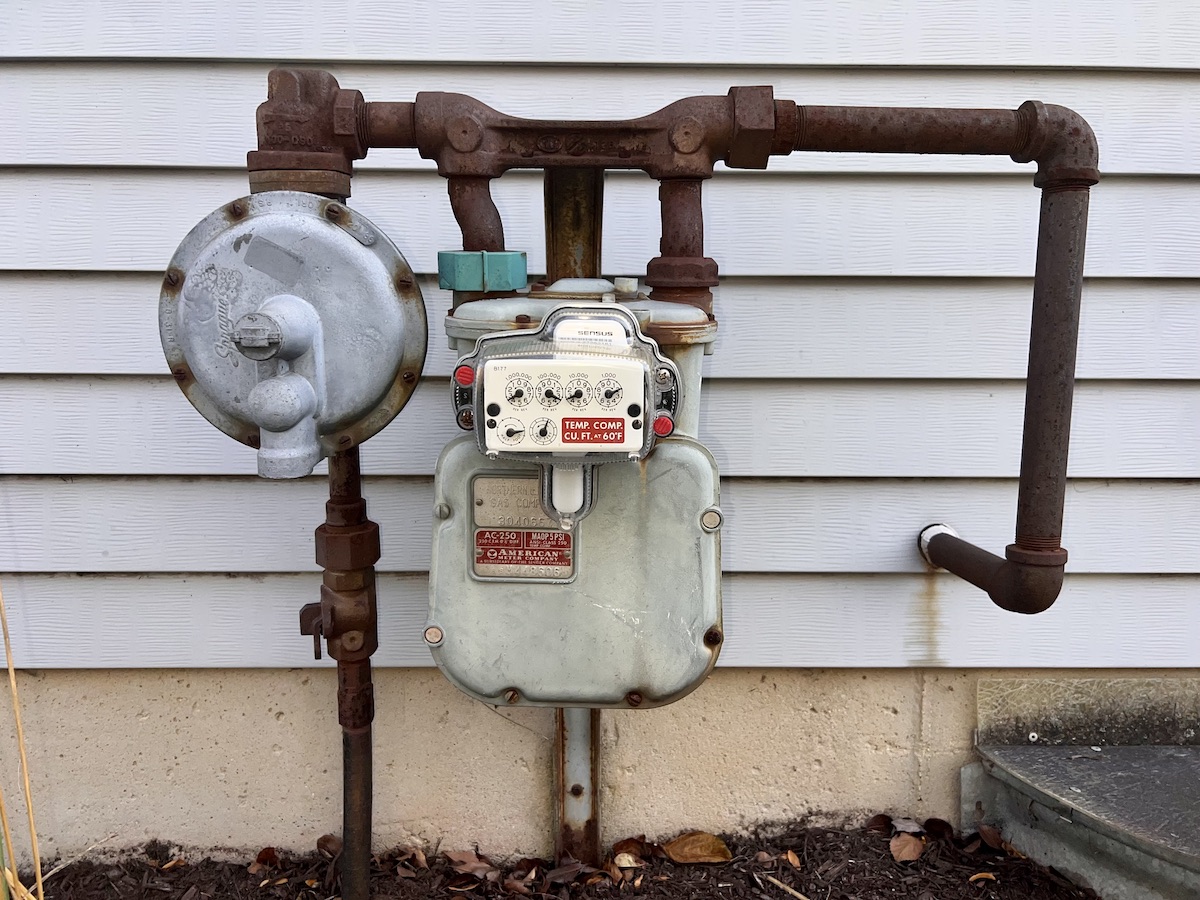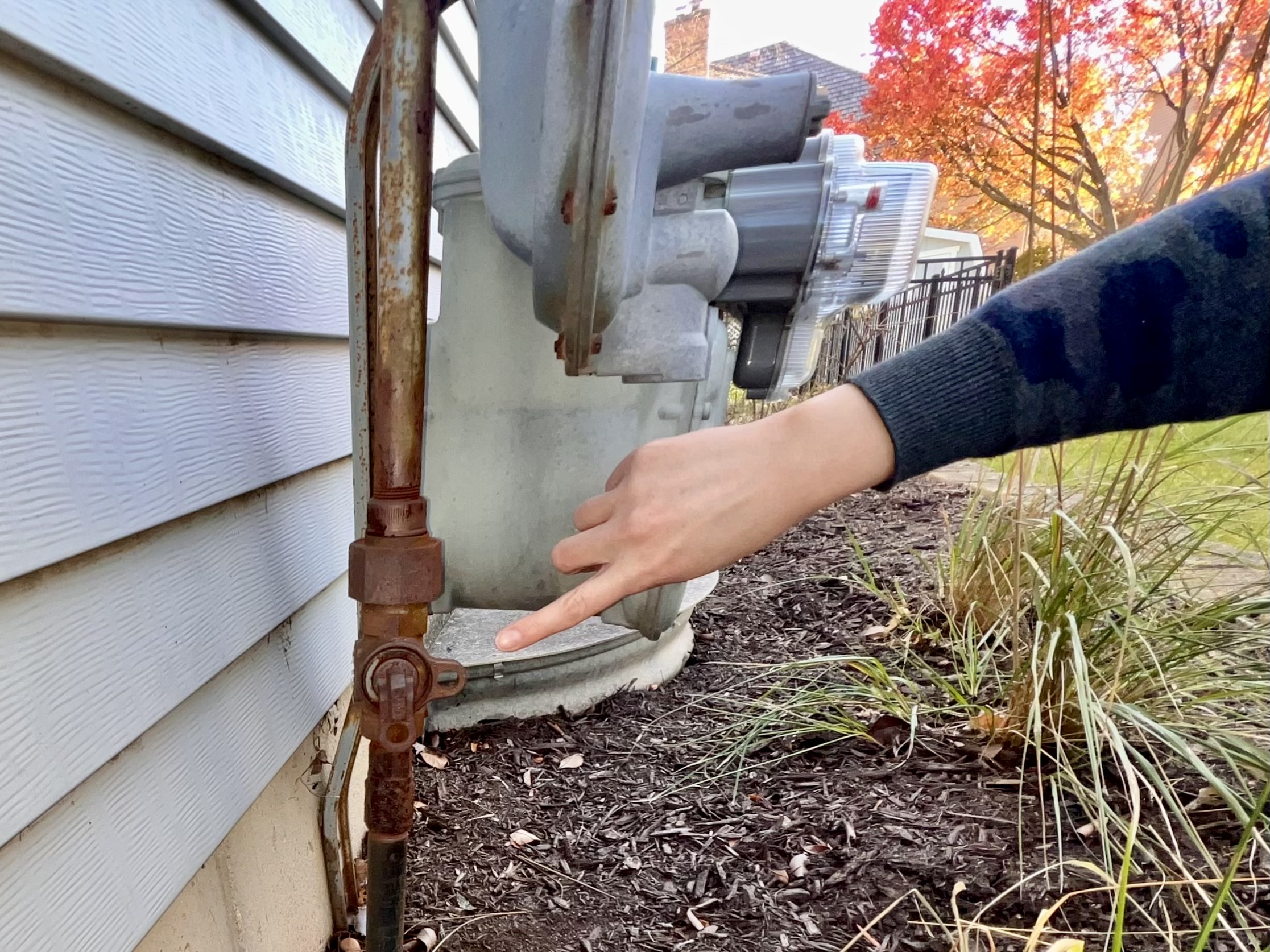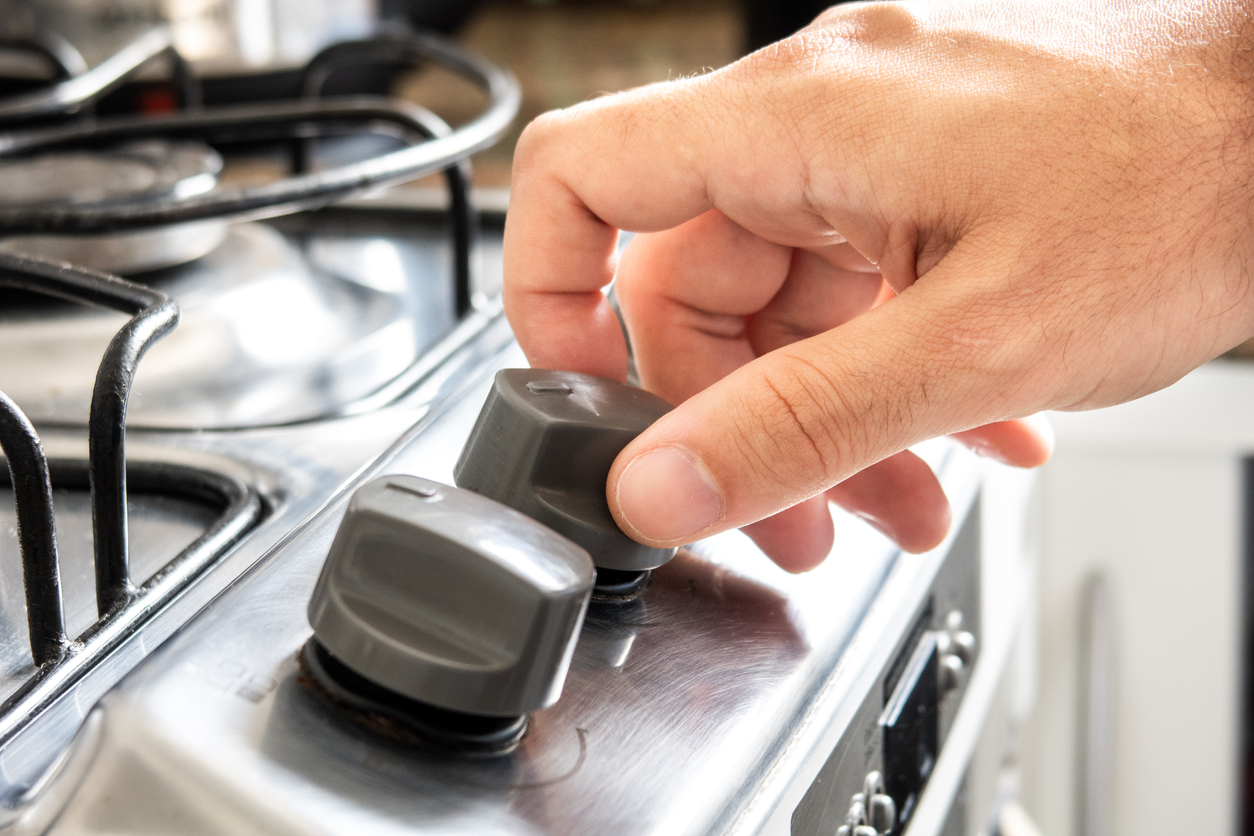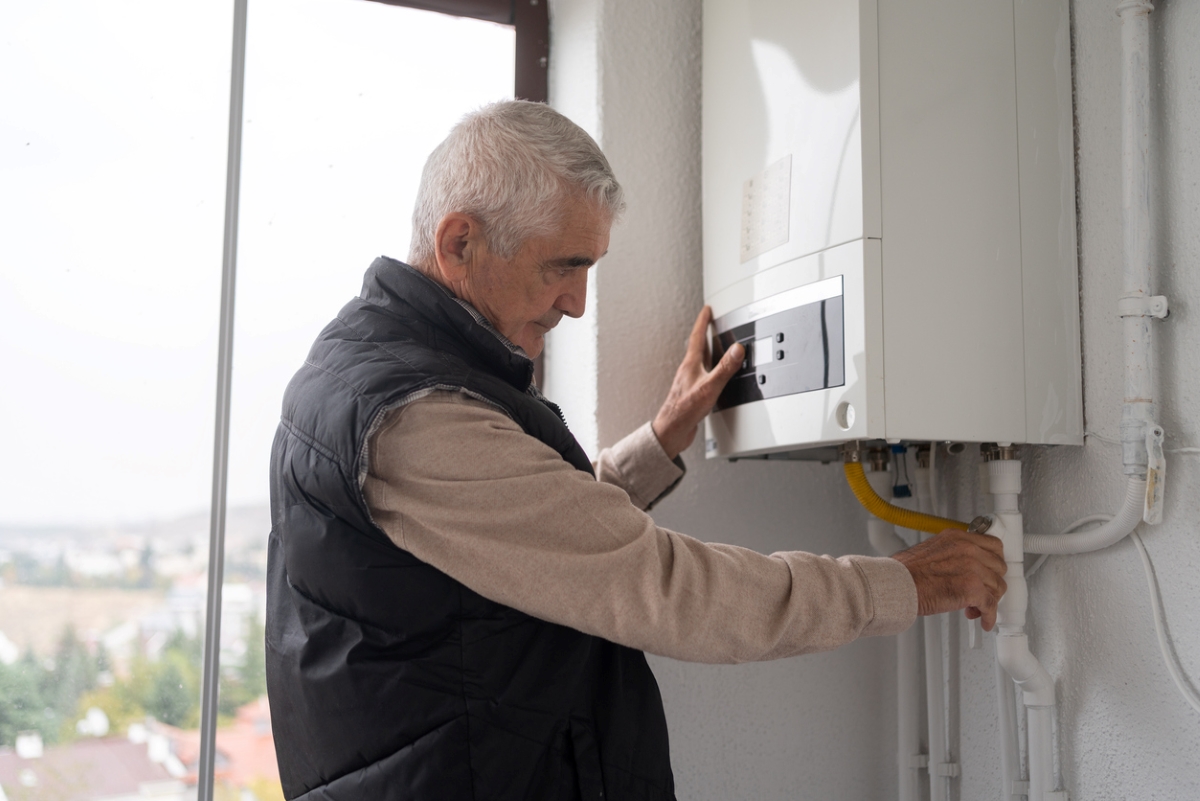

We may earn revenue from the products available on this page and participate in affiliate programs. Learn More ›
If you have a natural gas line running into your home, you need to know the location of your gas shut-off valves. A gas leak or a damaged gas line is an emergency situation that requires immediate action, and these emergencies are more common than you might suspect.
According to the American Chemical Society, there are about 630,000 natural gas leaks annually. While most of these are caused by excavation damage or mishaps like a car hitting the gas meter, one out of every five leaks is the result of incorrect operation, corrosion, or equipment failures.
When Should the Gas Be Shut Off?
You should shut off the main gas line to your home only in an emergency, such as when you smell gas, hear gas hissing, see a break in the gas line, or suspect a gas leak. In these situations, the first thing you should do is get everyone out of the house and call your gas company, and then shut off the gas only if you can safely do so.
Your home will have both main gas shut-off valves and individual shut-off valves for the furnace, stove, dryer, and other gas appliances. Before an emergency happens, make sure you know where in your home the gas shut-off valves are located and how to turn a gas valve on or off.
Tools & Materials
Bobvila.com may earn a commission from purchases made through these links.
Before You Begin
Shutting off the gas to a house is a serious undertaking, so shut off the gas main only if you absolutely must. Once you have turned off the gas to the house, do not turn it back on yourself. Contact the gas company to perform an inspection and safely restore service to the house. Opening the valve back up without fixing the problem (or opening it up too quickly) can result in damage, or create another problem altogether.
- Whenever you smell gas, evacuate people and pets from the house, and call the gas company immediately for help.
- Never shut off the gas to a house unless you smell gas, see a broken gas line, suspect a gas leak, or hear gas escaping.
- If you suspect a problem with a specific gas appliance, try to shut off the gas to the appliance before attempting to shut off the main gas line to the house.
- Never attempt turning the gas back on after disconnecting the gas to the house. Always contact the gas company so a trained professional can safely restore service.
How to Turn Off Your Home’s Main Gas Line

Step 1: Locate the main gas valve.
Depending on where you live and how old your house is, the location of the gas main will vary. You’ll usually find it on the side of the house. Larger structures may have more than one gas meter, in which case there should be a master valve that controls the flow of gas to the entire building.
Most homes will have two main shut-off valves: the street-side valve, which is owned by the utility company and is not intended for homeowner use, and the house-side valve, which is located inside the house and is owned and intended for use by the homeowner. Some older homes may not have a house-side valve.
- The street-side main shut-off valve, which should be used only if the house-side valve is inoperable, is located right before your gas meter. The meter is usually found on the outside of the house, although in older homes it may be tucked away in the basement where the gas line enters the building. If it’s in the basement, the meter will very often face a window so it can be read from the outside. This valve will be located on the inlet side of the gas meter.
- The house-side main shut-off valve is usually located right where the line enters the house. It could be further down the line, but it will always be before a tee in the pipe or an appliance connection. It can be identified by the black iron pipe that runs to it.
RELATED: How to Turn Off Water to Your House
Step 2: Turn off the gas.
Again, don’t turn off the gas unless absolutely necessary. Turning it back on requires a visit from the gas company, and restoration of service may be delayed.
- To turn off the gas to your home using the house-side shut-off valve: Turn the handle so that it sits perpendicular to the pipe. While this should shut off the flow of gas to your home, it will take a short period of time for the remaining gas in the line to dissipate. Wait a few moments before verifying that the gas is off.
- To turn off the gas to your home using the street-side shut-off valve: Gas companies prefer that homeowners leave the street-side valve to the pros. That said, if you do not have a house-side valve or if your house-side valve is not working, you can shut off the street-side valve using a 12-inch or larger adjustable wrench. Rotate the rectangular metal nub a quarter turn so that the valve sits perpendicular to the pipe. If turning it is difficult, try using 12-inch tongue-and-groove pliers or applying a penetrating oil like WD-40. If it won’t budge, contact the gas company.
Step 3: Verify that the gas is off.
First, visually confirm whether the gas valve is open or closed by checking to make sure that the lever or nub is perpendicular to the gas line. Then, just in case the valve is faulty, listen for gas flow through the pipes. Check the pilot lights in older appliances to determine if they are still lit. (Newer appliances don’t have pilot lights, so they’re not useful for checking whether the gas is off.)
If you’re concerned that the gas isn’t truly off, call the gas company to have them come inspect the line. They will be able to determine whether the gas is off and diagnose issues with your system. Do not go back into the house until the gas company has inspected the line and determined that it is safe to enter.
Step 4: Don’t turn the gas back on.
Any time that you shut off the gas main, expect to be without gas for 1 to 2 hours, or longer. As we’ve said but bears repeating, never attempt to turn the main supply back on—call your gas company instead. They will be able to properly operate the valve, ensure that your system is safe by checking for leaks, and confirm that any gas appliances with pilot lights are safely relit.
When to Turn Off Gas to Individual Appliances

There are a number of reasons why you may need to turn off the gas supply to a specific appliance:
- If you need to repair or replace the appliance
- If gas seems to be coming just from that particular appliance
- If a weather event requires you to evacuate. (Some utility companies suggest shutting off the supply to your individual gas appliances before evacuating, but instructions vary. The Federal Emergency Management Agency recommends following instructions from local authorities. If you live in an earthquake-, hurricane-, or wildfire-prone area, research your local requirements now, before an emergency occurs.)
Emergency tip: A gas-powered water heater can be a source of water if you’re hunkered down during an emergency. To access the water, first shut off the gas or electricity supply. Next, open the drain at the bottom of the water tank. Then, turn on a hot water faucet in the house. The air will go into the system, allowing the tank to drain. Collect the water in a container, and let it sit before using it so sediment settles.
If you have to evacuate, consider shutting off the gas to outdoor appliances and turning off any indoor thermostats for extra safety. It may be weeks before residents can return home after a natural disaster.
How to Locate Gas Shutoffs for Specific Fixtures

Each gas appliance should have a gas line running to it and a valve located just before the appliance. This valve, like the valves on the house-side main, can be shut off by rotating the handle until it’s perpendicular to the pipe.
- Gas stove: This valve is often located behind the oven and can be accessed by pulling out the bottom drawer of the stove or carefully pulling the stove away from the wall.
- Gas furnace: The valve for the furnace or boiler is likely located directly beside the appliance and is frequently in an easy-to-reach location on the gas line.
- Gas water heater: For a gas water heater, the valve is most often found at the bottom of the water heater, where the inlet line runs to the appliance.
- Gas fireplace: The shutoff for a gas fireplace is typically near the control panel, which is usually either below or to one side of the firebox, behind the front screen. Turn the pilot knob to the “off” position, and rotate the gas shutoff (typically a red valve) until it’s perpendicular to the pipe.
- Gas dryer: The shut-off valve for a gas dryer is found behind the appliance. Some dryers have a bottom drawer that can be used to reach the gas valve. If yours doesn’t, you can access the shut-off valve by carefully pulling the dryer out from the wall.
For older appliances, you may need to relight the pilot appliances when the gas is turned back on. Follow the manufacturer’s guidelines, which may be printed right on the appliance. If not, go to the manufacturer’s website. If you are uncomfortable lighting the pilot, ask a professional for help.
RELATED: Solved! Who Installs Gas Lines for Stoves?
Final Thoughts
It’s important that you know now where your gas shutoffs are and how to operate them safely so you’ll be prepared when and if an emergency strikes. Keep in mind that if you do have to shut off the gas main, you must contact the gas company to turn it back on—do not try to do this yourself. And most important of all, if you smell gas in your home, the smartest and safest course is to get everyone out of the house and call 911 from a location that is safely removed from the house.
